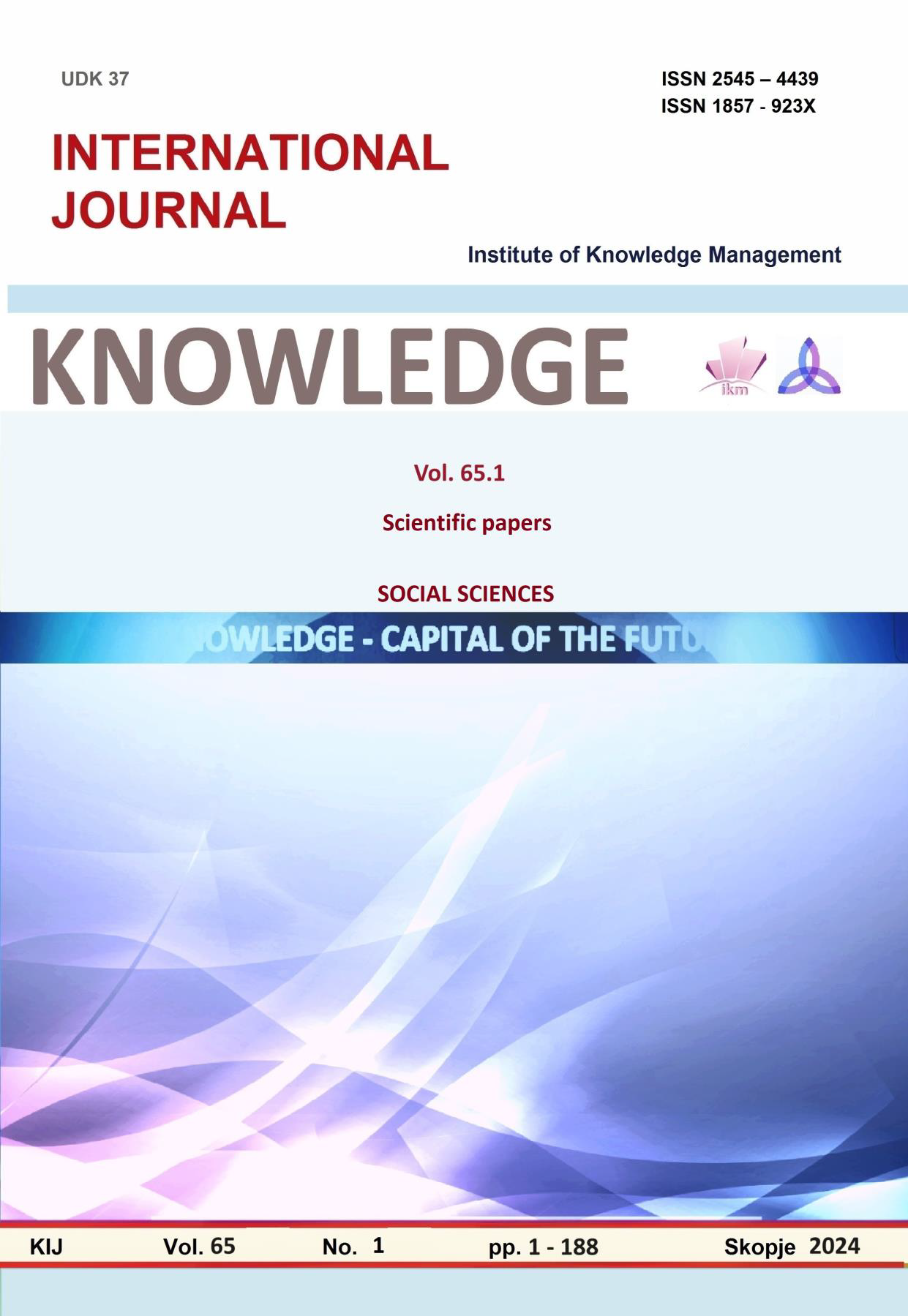EXPORT DIVERSIFICATION IN OPEC COUNTRIES: A PANEL DATA APPROACH
Keywords:
Export diversification, Herfindahl-Hirschman Index, GINI coefficient, OPEC, Panel data, Covid-19Abstract
This study investigates export diversification among OPEC countries, emphasizing its importance for economic resilience and stability. The objective is to assess which factors influence export diversification in OPEC countries. Methodologically, the research analyzes panel data from 2011 to 2022 using the Herfindahl-Hirschman Index (HHI) and the GINI coefficient to measure export diversification. The panel analysis considers GDP per capita, population (market size), FDI, trade openness, education, infrastructure, economic diversification, and the impact of the COVID-19 pandemic. The study employs both pooled and fixed effects (FE) models. The fixed effects model was employed to account for country-specific characteristics that may influence the results and was chosen because the Kruskal-Wallis test indicated statistically significant differences in the medians of HHI and GINI among countries, both for individual observations and average values. The Panel-Corrected Standard Errors (PCSE) model was used to address heteroskedasticity. The Shapiro-Wilk test was initially used to test for normal distribution, and due to its results, the Kruskal-Wallis test was subsequently employed. The results from the PCSE model indicate robust findings, confirming the significant impact of trade openness, economic diversification, and education on export diversification in both models where the dependent variable is HHI and GINI. This study highlights the importance of understanding various economic and infrastructural factors contributing to export diversification, providing valuable insights for policymakers aiming to enhance economic stability and growth in OPEC countries. This research first quantified export diversification indices using HHI and GINI, revealing the countries with the highest and lowest export diversification. The quantification was based on the HS6 classification, which represents the highest level of aggregation in export data, allowing for a detailed analysis of export diversification. According to the HHI, Iraq has the highest market concentration and, thus, the lowest export diversification, while Indonesia shows the highest diversification with the lowest market concentration. On the other hand, the GINI coefficient indicates that Angola has the lowest level of export diversification, whereas Iraq has the highest. Despite using the same dataset, these differing results arise because the HHI measures market concentration across products or countries. At the same time, the GINI coefficient assesses the inequality in export shares, focusing on the distribution of export income among different entities.
References
Agosin, M. R., Alvarez, R., & Bravo‐Ortega, C. (2012). Determinants of export diversification around the world: 1962–2000. The World Economy, 35(3), 295-315.
Ajayi, K. J. (2023). Impact of Export Diversification on Economic Growth in Sub-Saharan Africa (SSA). South Asian Journal of Social Studies and Economics, 20(3), 289-299.
Basile, R., Parteka, A., & Pittiglio, R. (2018). Export diversification and economic development: a dynamic spatial data analysis. Review of International Economics, 26(3), 634-650.
Bjelić, P. (2003). Ekonomika međunarodnih odnosa. Prometej: Beograd.
Cadot, O., Carrère, C., & Strauss-Kahn, V. (2011). Export diversification: what's behind the hump?. Review of Economics and Statistics, 93(2), 590-605.
Curto, J. D., & Pinto, J. C. (2011). The corrected vif (cvif). Journal of Applied Statistics, 38(7), 1499-1507.
Erkan, B., & Sunay, Z. F. (2018). Russia's market and product-based export diversification. Journal of Life Economics, 5(3), 43-60.
Gamariel, G., Bomani, M., Musikavanhu, L., & Juana, J. (2022). Foreign direct investment and export diversification in developing countries. Risk Governance & Control: Financial Markets & Institutions, 12(1).
Gnangnon, S. K. (2020). Effect of the internet on services export diversification. Journal of Economic Integration, 35(3), 519-558.
Holiuk, V. Y., Kovalchuk, B. S., & Anh, T. T. N. (2021). Export diversification impact on economic growth. Бізнес, Інновації, Менеджмент: Проблеми та Перспективи, 132-133.
Lebastard, L., Matani, M., & Serafini, R. (2023). GVC exporter performance during the COVID-19 pandemic: the role of supply bottlenecks.
Nguyen, C. P., & Su, T. D. (2022). Export dynamics and income inequality: New evidence on export quality. Social Indicators Research, 163(3), 1063-1113.
Osakwe, P. N., & Kilolo, J. M. (2018, October). What drives export diversification? New evidence from a panel of developing countries. In United Nation Conference on Trade and Development.
Swathi. M, & Sridharan, P. (2022). Determinants of export diversification: Evidence from fractional logit estimation model. Foreign Trade Review, 57(2), 160-177.





